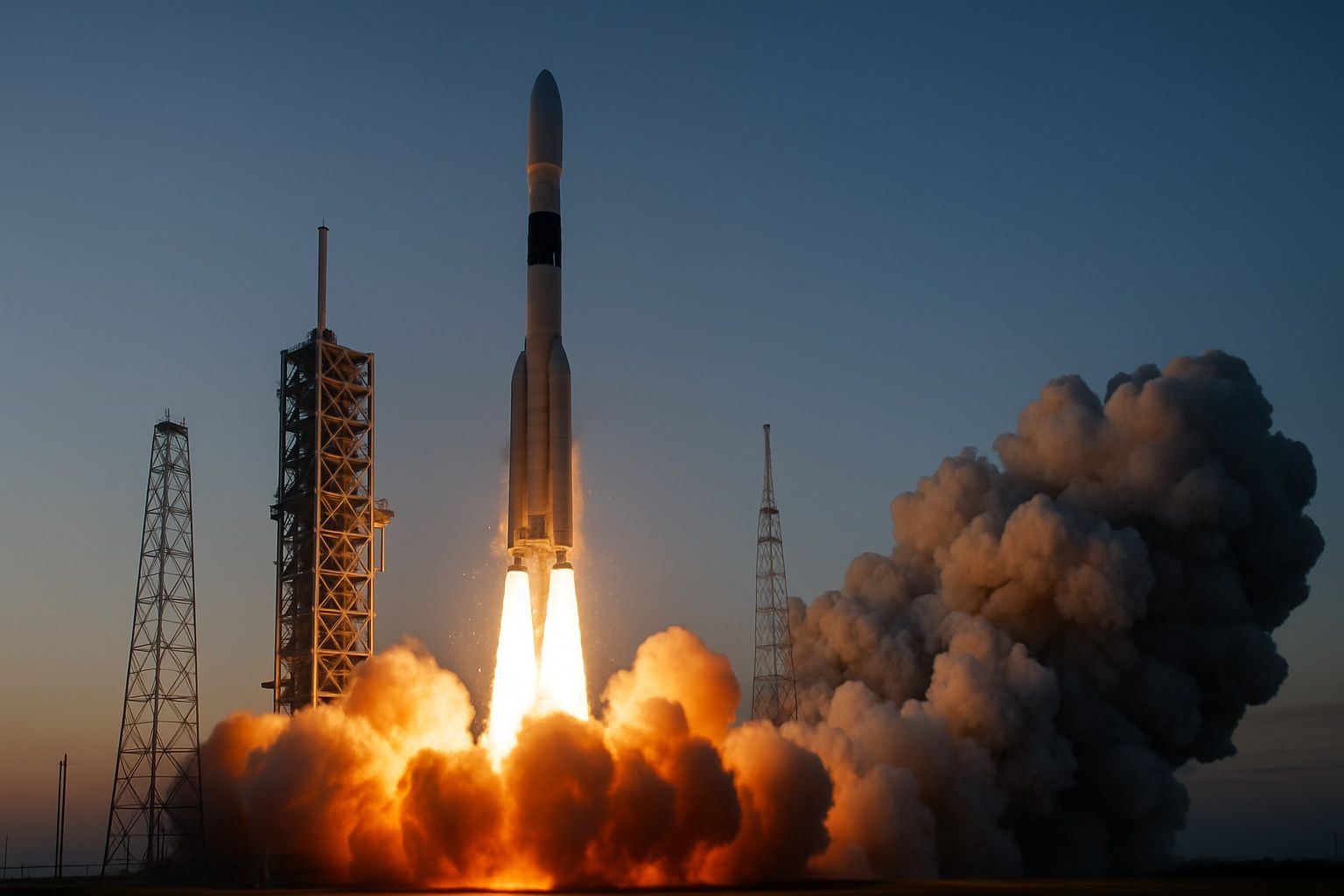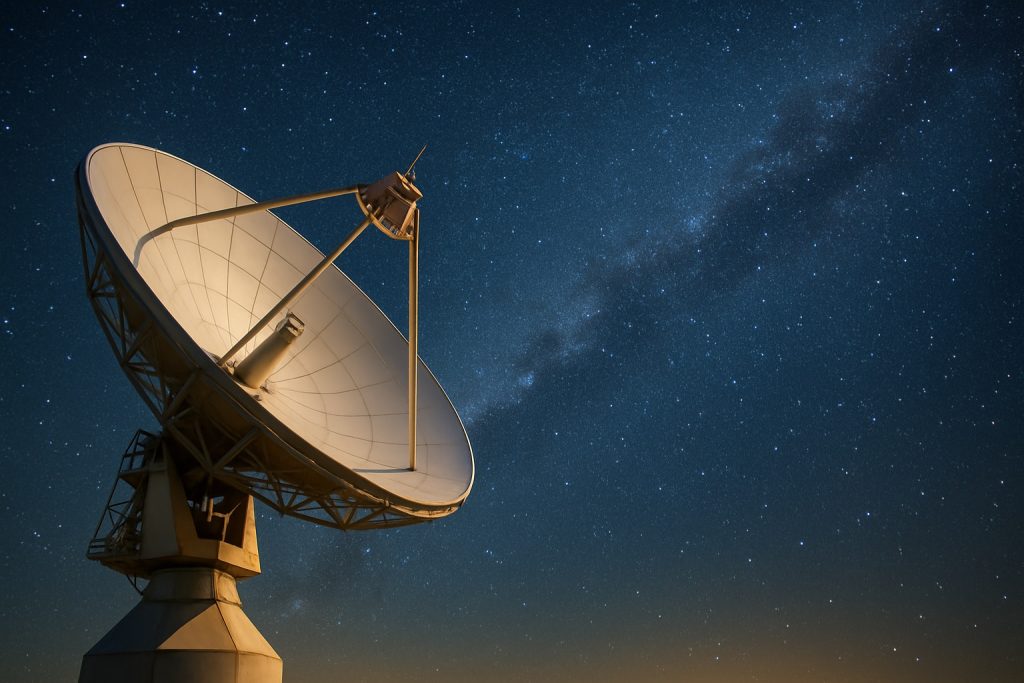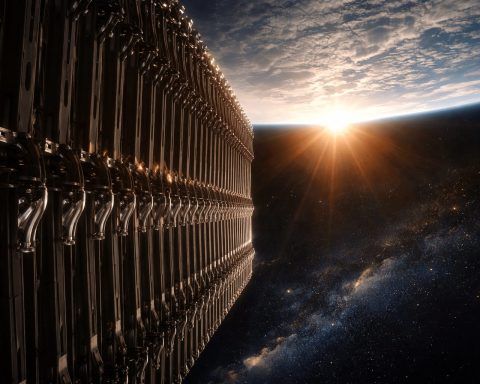- SpaceX achieved its 500th Falcon 9 mission in early July 2025, with an overnight Starlink launch featuring a booster on its 29th reuse.
- By July 2, 2025, SpaceX had conducted 83 Falcon 9 missions in 2025, including 61 Starlink deployments.
- In June 2025, the United States saw 21 commercial launches across four providers, with SpaceX accounting for 15, and 12 of those were Starlink missions.
- On June 28, 2025, four orbital launches occurred within 13 hours, including two SpaceX Falcon 9 Starlink missions, a Rocket Lab Electron, and Japan’s H-2A.
- Japan’s H-2A rocket completed its final mission on June 28, 2025, after a 50-launch career since 2001, delivering the 2.6-ton GOSAT-GW Ibuki climate satellite.
- Europe’s Arianespace completed the first commercial Ariane 6 mission in March 2025 and planned to ramp up launches through 2025.
- China’s Long March-4C lifted off from Xichang on July 3, 2025 carrying the Shiyan-28B 01 experimental satellite, marking the 583rd mission in the Long March series.
- Blue Origin’s New Shepard NS-23 on June 29, 2025 carried six passengers, including the first married couple to fly together and the 750th person in space, on a 10-minute suborbital flight.
- Varda Space Industries launched its fourth in-space manufacturing mission (W-4) in late June 2025 on a SpaceX Falcon 9 rideshare, its first fully in-house built spacecraft, with a planned Mach-25 capsule re-entry to Koonibba, Australia.
- Planet Labs secured a €240 million German government contract for high-resolution imagery and analytics, including access to its Pelican constellation and direct downlink feeds, following NASA’s $150 million Earth science data contract.
Launch Activities & Milestones
The summer of 2025 saw rocket launch activity reach unprecedented levels, marked by record-breaking cadence and new milestones across the globe. SpaceX continued to push the envelope of rapid, reusable launch operations, achieving its 500th Falcon 9 mission in early July. This overnight Starlink launch not only marked Falcon 9’s 500th flight, but also featured a booster flying for a record 29th reuse and landing successfully [1] [2]. By July 2, SpaceX had already conducted 83 Falcon 9 missions in 2025 (61 of which were Starlink deployments), putting it on pace to smash its previous annual launch record [3]. SpaceX’s launch frequency underscored a broader industry trend: in June alone, U.S. companies carried out 21 commercial launches, a new one-month record, with SpaceX accounting for 15 of them [4] [5]. (Notably, SpaceX flew 12 Starlink missions in June as it expands its megaconstellation.) The FAA confirmed June’s record launch rate, which included orbital, suborbital, and crewed missions across four providers (SpaceX, Rocket Lab, ULA, and Blue Origin) and multiple launch sites [6] [7]. This frenetic pace even led to moments where multiple rockets launched within hours of each other worldwide – for instance, four orbital launches occurred in a 13-hour span on June 28, involving two SpaceX Falcon 9s (Starlink), a Rocket Lab Electron, and Japan’s H-2A [8].
Several historic launcher milestones were reached in this period. In Japan, the H-2A rocket flew its final mission on June 28, capping a 50-launch career since 2001. The last H-2A successfully delivered GOSAT-GW (“Ibuki” Greenhouse Gases & Water) – a 2.6-ton climate-monitoring satellite – into orbit, then bowed out as Japan transitions to the new H3 rocket [9] [10]. GOSAT-GW carries advanced instruments (a microwave radiometer for water cycle and a spectrometer for atmospheric greenhouse gases) to support climate science [11]. The H-2A’s retirement comes after an illustrious run with only one failure in 20+ years [12], and its exit puts pressure on the H3 launch vehicle, which overcame a maiden flight failure in 2023 and logged several successful flights by early 2025 [13]. In Europe, new launch capabilities edged closer: Arianespace completed the first commercial Ariane 6 mission in March and planned to ramp up Ariane 6 launch tempo through 2025 [14] [15], while smaller launch startups progressed (e.g., France’s Latitude announced a new factory and contracts for its Zephyr rocket). Additionally, China maintained a high launch rate, exemplified by a July 3 liftoff of a Long March-4C from Xichang carrying the classified Shiyan-28B 01 experimental satellite, used for space environment exploration and tech testing [16]. That launch was the 583rd mission in the Long March series, highlighting China’s intense orbital campaign [17].
In the suborbital realm, Blue Origin reenergized the space tourism market. On June 29, Blue Origin’s New Shepard flew its third crewed suborbital mission in under three months, signaling a return to regular service after a hiatus [18]. The NS-23 flight carried six passengers (including the first married couple to fly together and the 750th person to reach space) on a 10-minute microgravity experience above West Texas [19] [20]. This uptick in New Shepard launches reflects growing demand for commercial human spaceflight, complementing other crewed missions in late June like SpaceX’s Ax-4, which ferried four private astronauts to the ISS on a Falcon 9 (launched June 25) [21].
Launch innovation extended beyond Earth, too. Rocket Lab continued to refine small-launch operations (completing two Electron launches within 48 hours in late June) [22], and United Launch Alliance (ULA) made progress stacking its first Vulcan rocket for an upcoming inaugural mission [23]. Even Australia neared the orbital club: startup Gilmour Space prepared for the debut launch of its Eris-1 rocket – the first homegrown Australian orbital rocket – in early July, though technical snags (like a payload fairing issue and weather) forced a delay to later in the month [24] [25]. Gilmour’s maiden flight, carrying a small payload (and even a jar of Vegemite as a publicity stunt), aims to make Australia the next nation to achieve an orbital launch, reflecting the global proliferation of launch startups. Indeed, industry analyses show a record 259 worldwide launch attempts in 2024, roughly one every 34 hours, and predict even higher launch rates in 2025 as new rockets come online [26] [27]. As one report noted, the launch boom is spurred by mega-constellation deployment and renewed focus on independent launch capability in regions like Europe [28]. The space economy’s upward trajectory is evident in these launch statistics – and with SpaceX even targeting up to 170 orbital launches in 2025 [29], the “new normal” in space access is one of rapid, frequent flights that would have seemed unimaginable just a few years ago.
In-Orbit Services: Satellite Servicing, Refueling & Manufacturing Breakthroughs
The mid-2025 period delivered major advancements in on-orbit services and technology, signaling that space is no longer just “launch and leave” – satellites can now be maintained, refueled, and even manufactured in orbit. A landmark achievement came from Northrop Grumman’s SpaceLogistics, which in June integrated a sophisticated dual-arm robotic servicing payload (built by the U.S. Naval Research Lab) onto its Mission Robotic Vehicle (MRV) [30]. This MRV, part of a DARPA-backed program, is set to become the first commercial spacecraft with robotic capabilities for servicing satellites in geostationary orbit (GEO) [31]. Once launched to GEO, the MRV will be able to rendezvous with client satellites to inspect them, perform repairs or adjustments, reposition them, and even attach “Mission Extension Pods” to extend their lifetimes [32]. This capability represents a huge leap in how we manage space assets. As Rob Hauge, President of SpaceLogistics, put it, the goal is to enable an “innovative, flexible, adaptable” model of satellite operations – one where servicing and life extension are routine, greatly increasing the value and sustainability of orbital infrastructure [33]. With the MRV’s robotic arms now integrated and headed into environmental testing, Northrop is on track for a servicing mission in the next year or so. Industry analysts project that on-orbit servicing (refueling, repair, debris removal) could become a several-hundred-million-dollar market by 2030, growing rapidly thereafter [34]. The MRV milestone in summer 2025 thus lays the groundwork for a future “space gig economy” in orbit [35] [36], where servicing spacecraft regularly tend to satellites the way mechanics service cars.
Hand-in-hand with servicing is in-space refueling and debris mitigation, which also saw notable progress. Startup Orbit Fab, known as the “Gas Stations in Space” company, announced partnerships to flight-test its standardized refueling port (the RAFTI interface) on orbit [37]. In fact, Astroscale U.S. and Orbit Fab secured a U.S. Defense contract to refuel a Space Force satellite in GEO by 2026, which will be the first-ever in-orbit refueling of an operational U.S. military satellite [38]. Announced in April and backed by the U.S. Space Force and AFRL, this mission will send an Astroscale refueler spacecraft (with ~30 kg of hydrazine fuel) to rendezvous with a Space Force satellite, dock via Orbit Fab’s RAFTI port, and transfer propellant in space [39]. After topping up the client satellite, the refueler plans to visit an Orbit Fab fuel depot (also slated for launch in 2026) to refill itself and potentially service a second satellite [40]. This demonstration is pivotal – it proves a new logistics chain in space that can keep satellites “tanked up” for extended maneuvers or life extension. As Space Force’s Gen. Stephen Whiting noted, future conflicts in space may not be short, so the ability to replenish satellites’ fuel and “stay in the fight” longer is strategically crucial, especially as rivals like China demonstrate on-orbit refueling of their own satellites [41]. Moreover, the same refueling tech will benefit commercial operators; once its military mission is done, Astroscale’s refueler could service other commercial sats during its 2–3 year lifespan [42]. In the debris removal and space situational awareness (SSA) arena, Astroscale won a £5.15 million UK contract in June to lead Project Orpheus, which will launch a pair of small satellites to monitor space weather and orbital debris environment by 2027 [43] [44]. Astroscale (famed for its 2021 ELSA-d debris removal demo) will leverage its in-orbit expertise to help the UK track hazardous space conditions (solar storms, orbital debris, etc.) and enhance allied space resilience [45]. This shows how debris mitigation companies are diversifying – not only capturing defunct objects, but also providing valuable data on the space environment to prevent collisions and disruptions. Across the industry, significant capital is flowing into space traffic management solutions; for example, French startup Look Up raised €50 million in June to expand a global network of orbital tracking radars for collision avoidance and SSA services [46]. Such investments underscore that maintaining a safe, sustainable orbital environment is now a top priority as satellite numbers explode.
Another game-changing frontier in 2025 has been in-orbit manufacturing and return. Varda Space Industries, a California startup, continued to blaze a trail by manufacturing pharmaceuticals in microgravity and safely returning them to Earth. In late June, Varda launched its fourth in-space manufacturing mission (W-4) on a SpaceX Falcon 9 rideshare [47]. W-4 is Varda’s first fully in-house built spacecraft – featuring a new satellite bus, an improved heatshield, and a capsule – all designed and built at Varda’s El Segundo factory [48] [49]. While in orbit, W-4’s payload will crystallize a proprietary small-molecule drug in microgravity, aiming to produce pharmaceutical crystals of higher purity or efficacy than on Earth [50]. After completion, the capsule will re-enter at Mach 25 and land at the Koonibba Test Range in Australia for recovery [51] [52]. Notably, Varda received the FAA’s first-ever “reentry vehicle operator license” in June – a groundbreaking regulatory approval that allows Varda to perform unlimited capsule reentries through 2029 under a single license [53] [54]. The FAA’s decision, enabled by Varda’s string of three successful capsule landings (including one in Australia in May 2025), sets a precedent for the nascent commercial reentry sector [55]. It signals confidence that returning payloads from orbit can be done routinely and safely. Varda’s CEO Will Bruey highlighted that by vertically integrating design of the capsule, bus, and payload, the company can increase flight cadence to meet both pharmaceutical and government customers’ needs [56] [57]. Indeed, Varda envisions in-space manufacturing becoming “just another link in the global supply chain” [58]. The company’s next-gen capsule design and high-cadence approach will pave the way for larger-scale production of specialized materials (pharmaceuticals, exotic alloys, fiber optics) in microgravity – a capability that could revolutionize industries on Earth.
Meanwhile, in-space propulsion R&D took an unexpected turn. DARPA announced in early July that it canceled the DRACO nuclear thermal propulsion project, which it had been developing jointly with NASA. An agency official explained that dramatically lower launch costs and revised mission analyses diminished the need for nuclear propulsion at this time [59]. DRACO was intended to flight-test a nuclear-powered rocket for fast transit to the Moon or Mars, but with SpaceX’s Starship and other ultra-low-cost heavy launchers on the horizon, DARPA chose to redirect resources. This underscores how cheaper chemical launch is altering trade-offs in space transportation – for now, lofting more fuel or staging in Earth orbit may be more practical than developing costly nuclear stages. (Notably, SpaceX’s own Starship test program has been very active; by mid-2025 SpaceX had conducted three Starship test flights in the year, on top of four in 2024 [60] – an aggressive pace illustrating rapid iteration in spacecraft design.) While DRACO’s cancellation is a setback for nuclear propulsion advocates, NASA is still exploring nuclear thermal and nuclear electric propulsion for future deep-space missions, and the Pentagon may revisit it later as strategic needs evolve. In the near term, advances in electric propulsion (like more efficient Hall thrusters and novel plasma engines) continue to be introduced on new satellites, improving maneuverability and mission life. All told, on-orbit technology in summer 2025 is advancing on many fronts – making spacecraft more serviceable, upgradable, fuel-able, and even manufacturable in space. These innovations portend a new era where satellites are not static assets but part of a dynamic, extendable, and interconnected orbital ecosystem.
Earth Observation Analytics & Platforms
Earth observation (EO) also experienced a wave of developments in June–July 2025, with significant new satellite deployments, data platform initiatives, and market moves – even as challenges emerged. On the mission side, Europe celebrated the launch of MTG-S1 (Meteosat Third Generation Sounder-1) on July 1, a next-gen weather satellite that will collect advanced meteorological data and monitor atmospheric pollution from geostationary orbit [61]. Lofted by SpaceX for EUMETSAT and the European Commission, MTG-S1 carries the Sentinel-4 UVN spectrometer as part of Europe’s Copernicus program, enabling hourly tracking of air quality over Europe alongside its weather imaging role. This reflects the growing trend of dual-purpose EO satellites serving both weather and climate/environment monitoring. A few days earlier on June 28, Japan’s final H-2A rocket launch delivered GOSAT-GW (Ibuki), a powerful climate observation satellite that will measure greenhouse gases and water cycle metrics globally [62]. GOSAT-GW’s data – from its microwave radiometer and spectrometer – will feed international efforts to track climate change indicators like atmospheric CO₂, methane, and water vapor [63].
Even as new satellites launched, there were setbacks: MethaneSAT, a high-profile privately funded satellite aimed at pinpointing methane leaks, suffered a mission failure. On June 20, after a bit over a year in orbit, the $88 million MethaneSAT suddenly went silent, and efforts to revive it failed [64]. The satellite, sponsored by the Environmental Defense Fund and launched in 2024 to map potent greenhouse gas emissions, was heralded as a game-changer for climate accountability. Its loss after such a short service is a blow to climate researchers – highlighting that space can still be unforgiving even for well-funded missions. Nonetheless, other private climate satellites are on the way (e.g., GHGSat launching more smallsat sensors for methane), and governments are planning enhanced missions (NASA’s Carbon Mapper, ESA’s CO2M) to ensure methane and carbon emissions are monitored. In fact, the overall Earth observation sector continues robust growth despite individual hiccups: Analysts project the commercial EO data and analytics market to reach $6–8 billion by 2030 [65], with a shift toward subscription-based platforms delivering insights-as-a-service to many end-users. The indirect economic value enabled by EO (in agriculture, insurance, disaster management, etc.) is far larger – and recognizing this, governments are boosting investment in Earth-observation programs for climate and security alongside commercial players [66].
On the business front, Planet Labs scored a blockbuster deal that exemplifies the surging demand for geospatial intelligence. In a multiyear agreement announced in late June, Planet secured a €240 million (~$280 million) contract with the German government [67]. Through this program (funded by Germany’s defense and intelligence budgets), Planet will provide high-resolution satellite imagery and analytics for European security needs, including dedicated access to its upcoming Pelican satellite constellation and direct downlink feeds to German ground stations [68] [69]. This is one of the largest-ever Earth observation contracts for a commercial provider in Europe, and underscores how allied governments are embracing commercial satellite data to complement their national recon assets. The deal also gives Planet a stronger foothold in Europe, aligning with its strategy to “push into the European market” and serve more international customers. As SpaceNews noted, it’s “the latest sign of surging international demand for commercial space-based surveillance capabilities.” [70] Indeed, in the face of growing geopolitical tensions, many countries find it faster and cheaper to buy imagery from companies like Planet, Maxar, Airbus, and BlackSky than to build and launch their own satellites. We are seeing a blurring of lines between government and commercial Earth observation – for example, NATO and European agencies are jointly funding commercial imagery purchases for strategic and humanitarian uses. Planet’s German contract follows a similar $150 million contract the company has with NASA for Earth science data, and comes as Earth-observation firms lobby against any US budget cuts that would reduce government imagery purchases. (EO company CEOs have been pushing back on proposed US budget trims, arguing that reliable funding is needed to maintain and expand the innovative services they provide to government users [71].)
In parallel, new startups and platforms are emerging to extract more value from Earth observation data. One example is Liberatech Space, a Singapore-based startup co-founded by former Axelspace and Astroscale executive Yasunori Yamazaki. Liberatech, which came out of stealth in late June, announced it will offer customized Earth-observation analytics products for commodity trading, energy, and environmental monitoring [72]. The idea is to provide tailored insights (e.g. mining site assessments, crop yield forecasts, industrial emissions tracking) by fusing satellite imagery with AI, and deliver it directly to enterprise clients as actionable intelligence. Liberatech even formed a strategic partnership with KSAT (the Norwegian ground station network) to access a variety of satellite data and deliver timely products [73]. This reflects a broader trend of EO startups focusing on vertical applications – instead of just selling raw imagery, they’re selling answers to business questions in specific sectors. Another trend is the development of cloud-based geospatial platforms that aggregate multi-source data and offer analytics at scale. For instance, Esri and Microsoft expanded their partnership to integrate satellite imagery into GIS tools with AI analytics, and Google is enhancing its Earth Engine platform for commercial use, given the explosion of daily imagery available from constellations.
Despite strong growth, Earth observation players face challenges. Market competition is intense, with numerous constellations (optical, radar, hyperspectral) fighting for customers, which drives down imagery prices. Also, as noted, government budget uncertainty (in the US, proposals to trim commercial imagery funds) could restrain some revenue unless industry convinces policymakers of the value of these services. Nonetheless, the consensus is optimistic: the World Economic Forum estimates Earth observation data could add $700 billion in value to the global economy by 2030 through improved decision-making in six major sectors [74]. In line with that, analysts anticipate consolidation and platformization, where a few large platforms might serve as one-stop shops for EO data by late decade [75] [76]. We are already seeing signs of this, with companies like Maxar vertically integrating (imagery + analytics software) and others like Satellogic offering “imagery-as-a-service” subscriptions.
In summary, June–July 2025 was a pivotal period for space technology: Launch providers shattered records and demonstrated routine rapid reuse, signaling a new era of affordable access to space. In orbit, servicing and refueling capabilities matured from concept to imminent reality, promising to extend satellite lifespans and mitigate debris. In-space manufacturing missions proved that valuable products can be made off-Earth and returned, heralding an emerging orbital economy. And on our home planet, Earth observation systems – the eyes on the Earth – expanded in scope and scale, delivering more data (and insight) than ever before, even as the sector adapts to failures and fierce competition. This dynamic summer showcased how the space industry is firing on all cylinders: breaking old boundaries and enabling novel applications that will shape both the future of space exploration and life down here on Earth.
Sources: Recent news coverage and analysis from SpaceNews, Spaceflight Now, Space.com, Via Satellite, Spacedaily, Xinhua, Payload, and other industry reports (June–July 2025) [77] [78] [79] [80] [81], including expert commentary and market forecasts.
References
1. spaceflightnow.com, 2. spaceflightnow.com, 3. spaceflightnow.com, 4. www.space.com, 5. www.space.com, 6. www.space.com, 7. www.space.com, 8. starfightersspace.com, 9. starfightersspace.com, 10. starfightersspace.com, 11. starfightersspace.com, 12. starfightersspace.com, 13. starfightersspace.com, 14. newsroom.arianespace.com, 15. www.esa.int, 16. english.news.cn, 17. english.news.cn, 18. spacenews.com, 19. ts2.tech, 20. spacenews.com, 21. www.space.com, 22. starfightersspace.com, 23. spaceflightnow.com, 24. www.space.com, 25. www.space.com, 26. www.space.com, 27. www.space.com, 28. www.space.com, 29. www.space.com, 30. www.satellitetoday.com, 31. www.satellitetoday.com, 32. www.satellitetoday.com, 33. www.satellitetoday.com, 34. ts2.tech, 35. payloadspace.com, 36. nextspaceflight.com, 37. investors.momentus.space, 38. payloadspace.com, 39. payloadspace.com, 40. payloadspace.com, 41. payloadspace.com, 42. payloadspace.com, 43. www.spacedaily.com, 44. www.spacedaily.com, 45. www.spacedaily.com, 46. www.spacedaily.com, 47. www.prnewswire.com, 48. www.prnewswire.com, 49. www.prnewswire.com, 50. www.prnewswire.com, 51. www.prnewswire.com, 52. www.prnewswire.com, 53. www.prnewswire.com, 54. www.prnewswire.com, 55. aiaa.org, 56. www.prnewswire.com, 57. www.prnewswire.com, 58. x.com, 59. www.copernical.com, 60. www.space.com, 61. spacenews.com, 62. starfightersspace.com, 63. starfightersspace.com, 64. starfightersspace.com, 65. ts2.tech, 66. ts2.tech, 67. starfightersspace.com, 68. starfightersspace.com, 69. spacewatch.global, 70. starfightersspace.com, 71. spacenews.com, 72. spacenews.com, 73. spacenews.com, 74. www.weforum.org, 75. ts2.tech, 76. ts2.tech, 77. spaceflightnow.com, 78. www.satellitetoday.com, 79. ts2.tech, 80. starfightersspace.com, 81. english.news.cn










